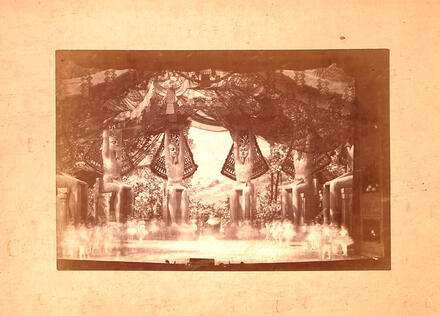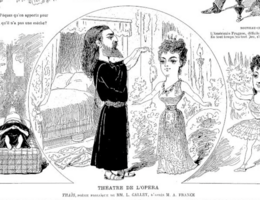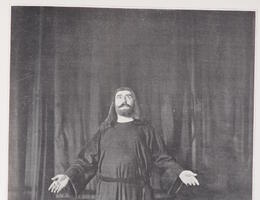Thaïs

Comédie lyrique en 3 actes et 7 tableaux créée à l'Opéra de Paris.
Massenet composed Thaïs for the Californian soprano, Sybil Sanderson (1865-1903). Thaïs, drawn from a medieval legend, was the subject first of a poem (1867), then an extremely anti-clerical novel (1890) by Anatole France. Louis Gallet made this into one of the first prose librettos in French opera, employing a style which he named “melic poetry”, recalling the melos of the Ancient Greeks, which was a rhythmic, sung genre of poetry. Initially destined for the Opéra-Comique, the work was adapted for the Paris Opéra, with an additional ballet, to follow Sybil Sanderson, who had signed a contract to perform at the latter opera house instead. The opera was premiered on 16 March 1894 and was a public success, despite a less than favourable reception by the critics. The performance by Lina Cavalieri in Milan in 1903, then in Paris in 1907, consolidated this opera’s reputation. Massenet’s music has incredible evocative power and unusual psychological insight. The composer described in his recollections how he allowed the libretto to take on a life of its own in his mind, until it set itself to music “unaided”; in fact, the arias in Thaïs represent a perfect fusion of music and words. This can be seen by the famous mirror scene, in which the courtesan’s crystalline notes reveal the empty life she is leading and her desire for eternity, which is certainly not that of being “eternally beautiful”, as she sings. The ensuing Méditation is, in the words of the critic Ernest Newman, a perfect musical portrait of the emotional process that leads to soul-searching and solace. Furthermore, as can be seen from the analysis by Jean-Christophe Branger, Thaïs has a distinctive musical structure giving the orchestra a dominant role, since Massenet composed a symphonic poem with solo soprano, Visions, in 1891, and reused it in the orchestral passages of his opera, which explains their richness and evocative power. The work we know today is a version revised by the composer in 1897; Massenet in fact added the gorgeous “oasis scène” (Act III) which symbolises the moment when the spiritual journeys of Thaïs and Athanaël converge. He added another ballet and softened the ending: in the first version, which is closer in spirit to Anatole France, the nuns, horrified by Athanaël’s words describing the pleasures of the flesh, cry out “un vampire!” while the children’s chorus sings “Pitié!”. In the second version, Massenet, who is known to have been struggling with his spirituality during this period, added compassion and mercy: the nuns stay silent, as does the children’s chorus, and only Athanaël says: “Pitié!”.
Synopsis
The action takes place in the Hellenistic Thebaid region, near Alexandria, and illustrates the journey taken by Athanaël (baritone) from spirituality to carnality and the opposite journey taken by the courtesan, Thaïs (soprano). The monk Athanaël, whose past and conversion are gradually revealed, wants to bring the courtesan, Thaïs, back to God. Ignoring his friend Palémon’s advice, he sets off for Alexandria (Act I, Scene 1). He arrives at the house of Nicias (tenor) and is invited to a banquet, at which Thaïs is also a guest. She tempts him to renounce asceticism (Scene 2). Alone in her chamber, Thaïs confides in her mirror, begging it for “eternal” beauty and telling it of her melancholy feelings. Athanaël enters and tries to convert her (Act II, Scene 1). The famous Méditation for violin and orchestra is heard here, symbolising the thoughts and conversion of Thaïs, who subsequently appears in the doorway of her house and agrees to follow Athanaël (Scene 2). In an oasis in the desert, Athanaël softens at the sight of the exhausted woman’s bloody feet and brings her some water. He places Thaïs in the convent of the White Sisters and realises that he will never see her again (Act III, Scene 1). The second scene, often cut, shows Athanaël with his reclusive brethren, haunted by the sensual image of Thaïs. He has a premonition of her imminent death. In the third scene, in the gardens of the convent, Thaïs, much changed by three months of fasting and penitence, is desperately ill. Athanaël enters. In their final duet, she recalls their meeting but he remembers only her beauty and her sensuality. She dies in the midst of a divine vision, while he collapses in despair.




